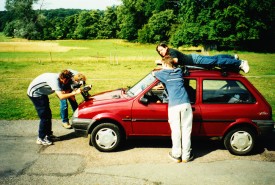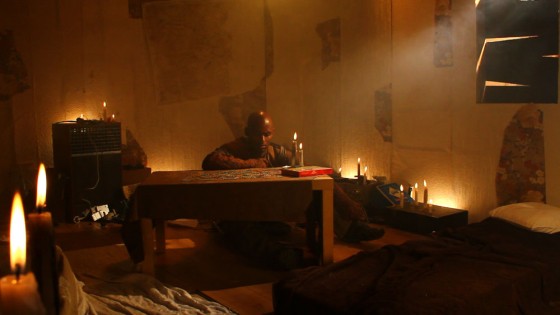
Following on from my last post, let’s take a closer look at how part of The Beacon‘s car chase sequence was created, in particular the bit where Sarah goes flying out through her windscreen during the crash and miraculously lands on the roof rack of the villain’s speeding car. This ridiculous feat garnered a round of applause at the premiere, but how was it done?
The car crash was done for real, as previously explained, but clearly I couldn’t afford the stunt team and wire rigs necessary to catapult someone through the air and then composite in the vehicles below, which is how you would probably do it if you had a proper budget.
In fact there are no visual FX in this sequence at all. The illusion is created entirely through editing, using quick cuts of Sarah (LJ Hamer) leaning through the pre-smashed windscreen, a close-up of her legs being pulled out through the windscreen by a couple of crew members stood on the bonnet, a low angle shot against sky where she’s not moving at all, and a dummy being thrown at the villain’s car. The dummy was pulled together from whatever items we had to hand and looked terrible, but only eight frames of it were needed in the edit before cutting to an angle of LJ (already on the roof rack) dropping from all fours onto her front.
They say a picture is worth a thousand words, so a video must be worth at least a million. So I’ve put together a little compilation of the rushes so you can see exactly what I mean.







